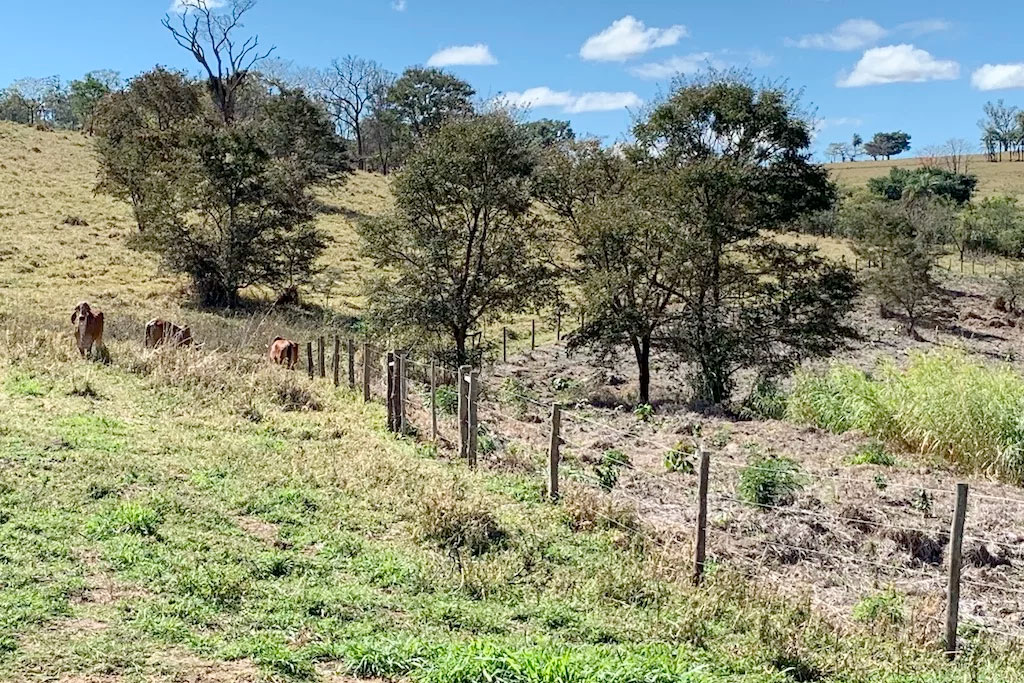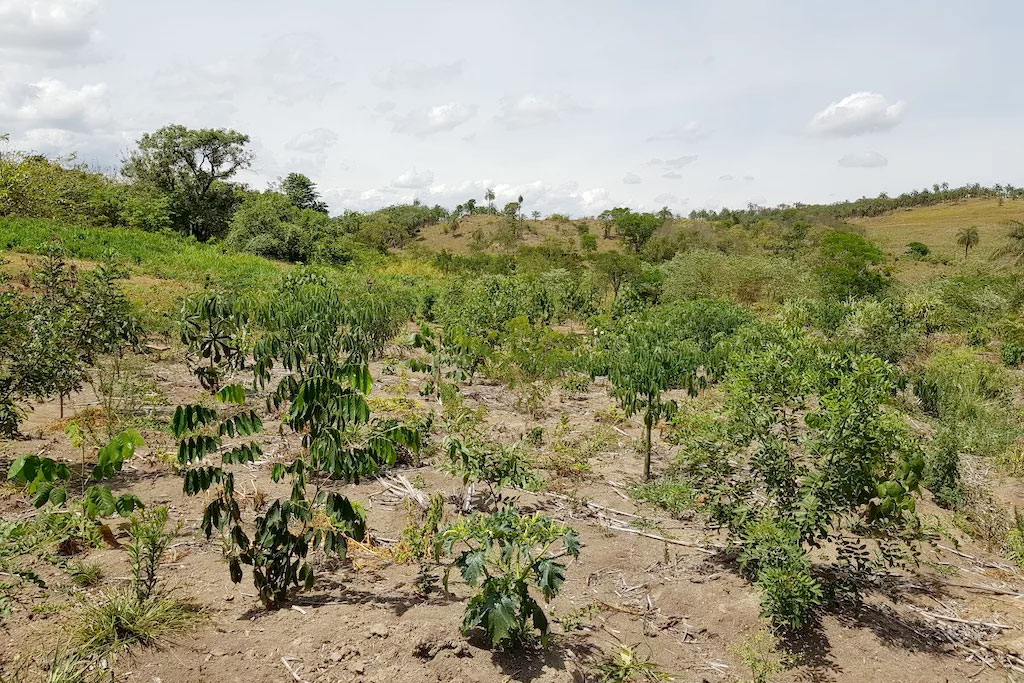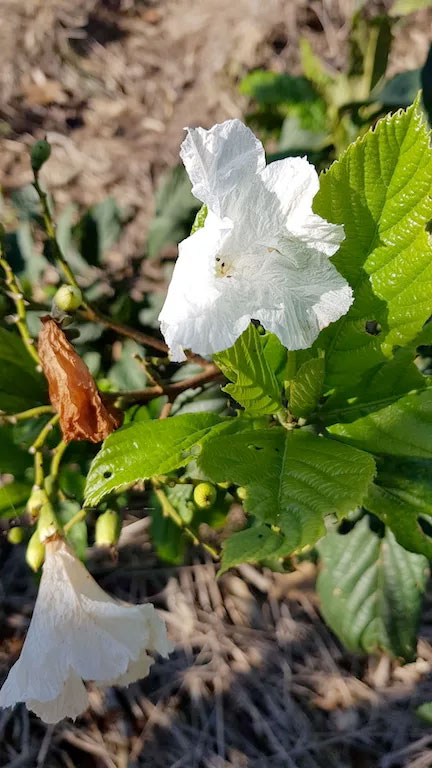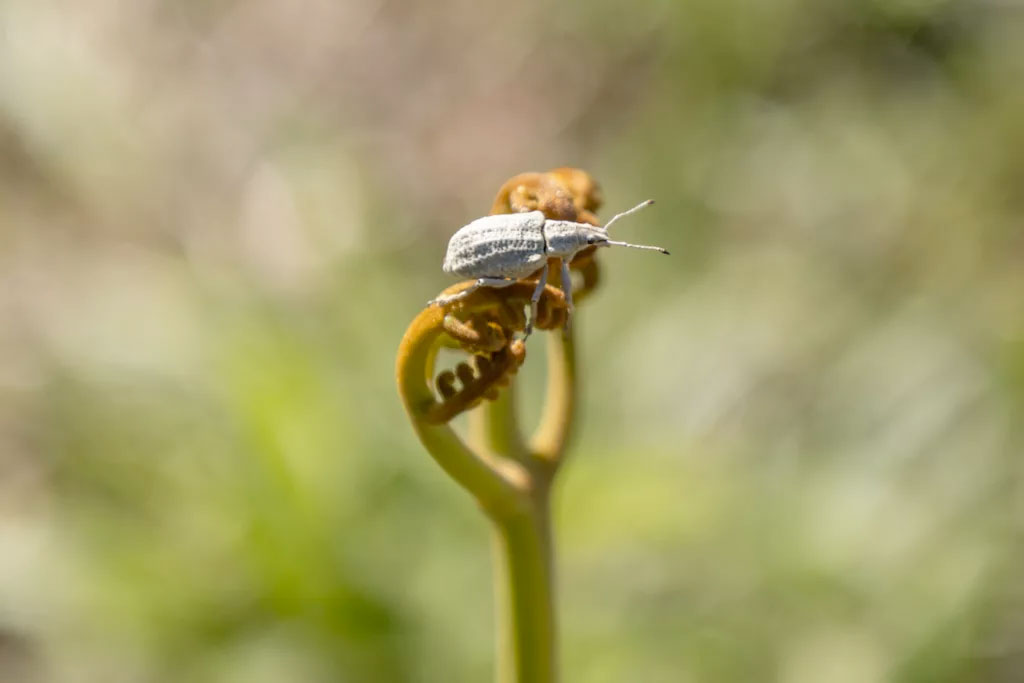Apoie nossas
causas
Se mantenha informado de nossas ações
14 de March de 2024
Mauri Roberto de Toledo, originally from Porto Feliz, São Paulo, began working in sugarcane cutting at the tender age of 12, forsaking his education to provide for his mother. For 20 years, he bulldozed his way through numerous ancient trees with a tractor, simply going with the flow of the times. Fast forward to today, and planting forests has become Mauri's bread and butter as he embraces new practices in the agribusiness of São Paulo’s heartland. At the helm of MR Ambiental, which provides services for SOS Mata Atlântica in restoration sites, this former manual laborer now leads the charge at Haras Maripá in Jaguariúna (São Paulo), where preserved areas are being restored to align the property with environmental laws."My current work makes up for my earlier years, and people recognize and value what I do," he shares.
Regretfully recalling the times when sugarcane fields used to stretch all the way to riverbanks, causing mud to flow into the water, the entrepreneur is now determined to rectify the harm caused by sugarcane farms and other rural activities in the interior of São Paulo. To restore 62 hectares, protect 11 springs, and comply with environmental laws, the haras received about 145 thousand native seedlings, along with technical support for planting and monitoring. Mauri confirms, "The move from sugarcane to trees comes with its own set of challenges, but the rewards are satisfying, especially getting to see wildlife coming back."

Mauri Roberto de Toledo, from MR Ambiental company, responsible for planting seedlings at Haras Maripá

The importance of fencing of the planted area surrounded by pasture.

Maripá, before and after.
Visits to the properties to assess progress are typically carried out in groups of three and involve a two-day journey, including a drive and sometimes a trek of over 19 km on foot. "Starting this project was very challenging, we’d have to cordon off pasture areas with cattle and tall grass, and plant forests amid very difficult conditions. There were cliffs, rocks, snakes, bees; we handled everything with just a hoe and a shovel," Mauri recalls. Now, he's getting ready for the fifth round of planting, armed with another 10 thousand seedlings.
For the past 40 years, Haras Maripá has specialized in breeding Mangalarga Marchador horses for riding classes, trail rides, and other activities. On top of that, they've been investing in the elite genetic improvement of Nelore cattle and goats. In recent years, Haras Maripá has taken significant steps towards environmental compliance by introducing native vegetation to areas that protect water sources. Following a period of maintenance and careful adherence to protocols, the initial phase of seedling planting has already met maturity criteria and the forest can now sustain itself and thrive without further interventions.
Connecting Forest Fragments
In Jaguariúna, this initiative is the result of a collaboration between SOS Mata Atlântica and São Paulo's environmental agency, CETESB. The goal of this partnership is to restore the forest using the Environmental Recovery Commitment Agreement (TCRA). The mechanism operates on the principle of compensating for the environmental impacts caused by projects in the State of São Paulo, through planting trees on rural properties that need to comply with the Forest Code.
Haras Maripá’s project provides environmental compensation for 67 companies or individuals taking part in the program overseen by CETESB. Filipe Silva, the initiative’s coordinator at SOS Mata Atlântica, explains: "Our state-wide strategy is to consolidate multiple legal obligations into larger forest fragments, thereby boosting ecological efficiency, and cutting costs. The goal is to make environmental compensation more effective and achieve mature, thriving forests, instead of the empty spaces that were common in the past," he stresses.
In addition to addressing compensation, the system offers other benefits to rural landowners: "It helps them comply with the Forest Code and get their Rural Environmental Registry (CAR), which typically costs between R$60,000 and R$70,000 per hectare," explains Filipe. By establishing a Permanent Protection Area (APP), the haras in Jaguariúna can access the Payment for Environmental Services program, a municipal initiative designed to offer financial rewards to those who safeguard forests and preserve water resources—an increasingly valued practice in the region. This incentive offers R$300 per hectare annually, and it also covers the expenses associated with fencing around water sources.
Special Methodology
The TCRA initiative, which originated 10 years ago, called for the establishment of a method to restore forests, in accordance with specific monitoring criteria outlined by state regulations. The areas undergo a maintenance period of 36 months to fine-tune the implemented measures and are monitored for eight years. The goal is to meet the mandated standards by the end of this period. Field inspections, which require manual measurements in often challenging local conditions, evaluate factors such as river siltation and the presence of non-native species like bamboo and pine.
It is essential to ensure that seedlings cover at least 80% of the ground, and the density of naturally regenerating plants—those that propagate naturally in the forest—should be 3,000 per hectare, comprising 30 different native species. This number supplements the 2,500 native seedlings planted per hectare, as prescribed in the traditional technique employed by SOS Mata Atlântica for the biome. In essence, these environmental compensation projects adhere to stricter standards: the seedling density here needs to be nearly double that used in other initiatives.
Rural landowners have a 20-year timeframe to meet the area recovery benchmarks and come into compliance with state regulations. To date, within the scope of TCRA, 35 areas are undergoing restoration, primarily in the Piracicaba, Capivari, and Jundiá Watershed (PCJ) due to their crucial role in water supply. In total, these projects encompass 798 agreements involving environmental compensation by companies or individuals, entailing the planting of 2 million seedlings across 760 hectares. SOS Mata Atlântica generates extensive technical documentation, which is then made available to participants in the system managed by Cetesb.

Area six months after planting.

Louro-pardo

Babosa-branca

Life returns after the firsts plantings.